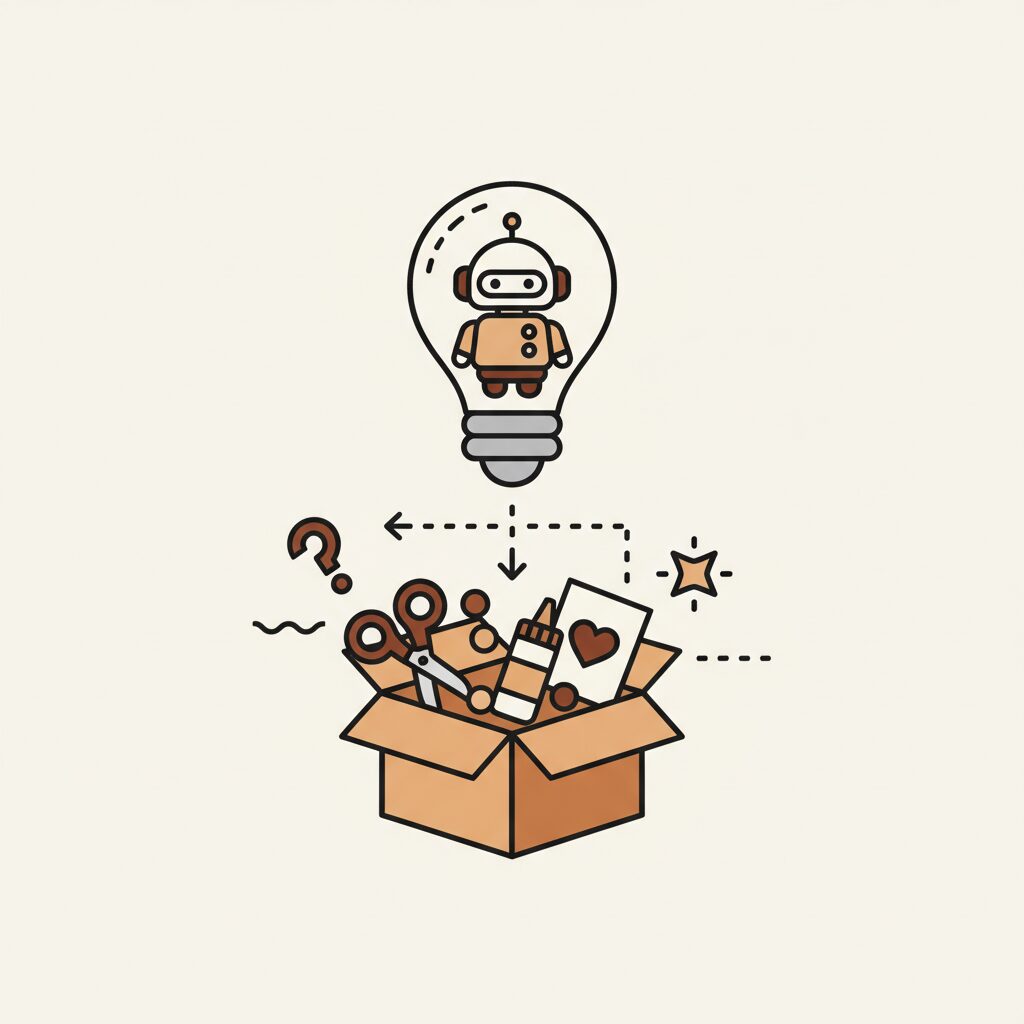
Ever notice how the cartoons your kid watches seem to magically suggest the exact toy they didn’t know they wanted? That’s not coincidence—it’s the quiet hum of AI reshaping how the world engages with our little ones. Paramendra’s new book, “The AI Marketing Revolution,” unpacks this shift in content and creativity. But here’s what lands differently for parents like us: this revolution is playing out on children’s screens. Marketers see engagement metrics; we see precious opportunities to share simple truths about being real in a world learning to anticipate their every blink.
How Does AI Hyperpersonalization Affect Kids’ Choices?

Remember when ads were broad billboards nobody really saw? Now picture this: an ad that knows your child prefers purple dinosaurs over green ones or giggled at a cartoon frog’s croak last Tuesday. It’s not magic—it’s generative AI analyzing whispers in their digital footprint. Studies show hyperpersonalization lifts click-through rates by 41% for texts and 25% for emails, making ads feel eerily like mind readers. For kids, this blurs the line between ‘I want this’ and ‘the algorithm thinks I do.’
It’s like when your kid finds candy labeled just for them—they’d never guess someone else picked those sweets! Flip the script by pausing together: ‘Why do you think they showed you that?’ Simple questions build armor against the siren song of over-personalization. After all, real curiosity outshines any algorithmic nudge.
Can Curiosity Counteract Algorithmic Overload?

Here’s the beautiful twist: the tech driving marketing gold can spark something richer—authentic wonder. When a child gets hooked by an AI-suggested robot video, don’t just accept it. Try, ‘Let’s build our own from cardboard boxes!’ That pivot from passive scrolling to hands-on discovery is pure parenting alchemy.
A McKinsey report hints at this potential: generative AI could unlock $4.4 trillion in global productivity, but for families, the real treasure lies in redirecting engagement toward creation. Think how Stitch Fix uses AI to help stylists interpret feedback—we can teach kids to interpret their own digital moments. Next ad break? Invent a story together about where that toy really comes from. You’ll watch imagination override impulse, turning screen time into springboards for ‘what if?’ It warms the heart to see their eyes light up not from targeted ads, but from shared ‘aha!’ moments.
Why Blend Digital and Real-World Experiences for Kids?

No algorithm knows the rhythm of your child’s laugh during a pillow fort collapse or the focus in their eyes while painting muddy rain puddles. That’s why blending digital exposure with real-world texture isn’t optional—it’s essential. AI-driven engagement is the background music of childhood now; let’s ensure it doesn’t drown out the symphony of doing.
Research reminds us that generative AI’s greatest value emerges alongside human insight—and kids grow tougher when we give them space to create without scripts. After screen time, swap the tablet for messy, instruction-free play: a puzzle without a picture, or a scavenger hunt for shapes in park gravel. These moments build grit no app replicates. Picture your child explaining ad tricks to their grandparent using a hand-drawn comic—not an app. That’s the sweet spot: tech enhancing, not eclipsing, the irreplaceable magic of making. Think less guardrails, more sprinkles—adding joy bit by bit.
How Can Parents Be the Ultimate Filter Against AI Marketing?

Let’s be real: no AI can match the warmth of a parent-remembered detail. ‘You loved this song at three!’ carries more weight than any data point. Marketing teams drown in ‘fear of change’ and ‘information overload’—sound familiar?—but you hold the ultimate filter: unbroken connection.
But here’s the secret weapon… When ads try to know your child better than you do, lean into your quiet power. Curate a ‘family favorites’ list together: shows, apps, even snack ideas that honor their voice without algorithmic hijacking. It’s not controlling clicks; it’s building a shared compass. Why not try Saturday mornings as ‘co-created time’? Pick one new digital thing as a team, then dive into it offline. Because the most revolutionary act isn’t blocking ads—it’s filling their world with moments so rich, so distinctly yours, that no algorithm stands a chance. That’s the kind of memories that stick—long after algorithms fade.
Source: The AI Marketing Revolution by Paramendra’s Books, Paramendra Books, 2025/09/01
